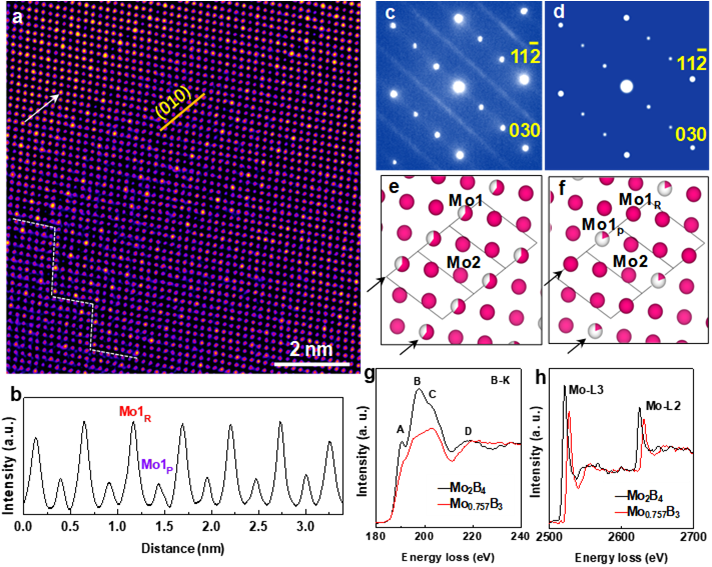Synthesis of high quality highest-boron molybdenum boride with multi-functionalities - Drs. Huiyang Gou and Xiang Gao
DECEMBER 15, 2019
New study from a team of scientists led by Dr. Huiyang Gou of HPSTAR reported the synthesis of high-quality single crystal of molybdenum boride by multianvil technique, which enables the understanding of long-standing uncertainties in structure and composition about this highest boride in Mo-B system. The superior mechanical properties and superconductivity were revealed unambiguously. Their study is published in recent issue of Chem. Mater. (10.1021/acs.chemmater.9b04052).
Boron-rich molybdenum borides are promising candidates for superhard materials in transition metal and light-element systems. However, it has been challenging to determine their exact structure and composition from the commonly used powder x-ray diffraction due to the involvement of light elements of boron with poor scatting ability to X-ray and the large difference in X-ray scattering factor between transition metal cation and boron atoms. The team of scientists led by Dr. Huiyang Gou proposed to use high-pressure technique to solve this long-standing discrepancy by synthesizing high quality single crystals of boron-rich molybdenum boride, with careful control of pressure and temperature while using bismuth as a fluxional material to enhance the migration of Mo and B atoms.
Single-crystal x-ray diffraction analysis revealed that the long-standing debated composition of boron-rich molybdenum boride was Mo0.757B3, instead of MoB3 or MoB4. Further nanoindentation and scanning transmission electron microscopy measurements revealed that Mo0.757B3 have very promising mechanical properties with strong orientational-dependent hardness and elasticity, which may be resulted from its two-dimensional boron distributions, explained by Dr. Hu Tang.
“High quality single crystal sample is the key enabling us to determine the exact composition and mechanical performance of molybdenum boride,” said by Dr. Huiyang Gou, a staff scientist of HPSTAR. “The Vickers hardness of 40 GPa, is even comparable to boron nitride, a common superhard material. Interestingly, short-range ordering of cation vacancies in (010) crystal planes was observed for the first time by aberration-corrected scanning transmission electron microscopy. They also find that Mo0.757B3 will become superconductive with a transition temperature of 2.4 K, which may be due to the partial occupancy of Mo atoms. The short range ordering is the key to uncover the complex structure-composition relationship as well as the origin of unique functionalities of boron-rich compounds, as said by Dr. Xiang Gao.

Caption: Atomic-level direct STEM observation of short-range cation (or vacancy) ordering in Mo0.757B3.
过渡族金属硼化物是一类具备超导和潜在超硬特质的多功能材料。由于富硼化物中具有复杂的硼网络结构,虽然预期其具备更高的力学性能,比如钼和钨的富硼化合物,但对于富硼金属硼化物基本的结构理解和认识长期以来备受争议,从而限制了对其物性的理解。究其原因,主要由于金属原子和硼原子之间的存在较大原子尺寸差异。通常的粉末衍射很难解析并得到其精细结构,特别是硼的含量和晶体占位。为准确理解钼的富硼化合物的结构信息,缑慧阳研究员研究团队利用温度梯度和低熔点金属助熔的方法在高温高压环境下获得了高质量钼的富硼化合物,通过单晶衍射和投射电镜STEM解析了其精细结构和成分。他们发现由于硼原子的二维分布的特点, Mo0.757B3的硬度及弹性性能展现出较大的各向异性。进一步的电阻和磁性测量表明Mo0.757B3会在~2.4 K转变为超导体。该工作为复杂结构的金属硼化物的合成与表征提供了一个清晰的思路。相关成果“Boron-rich Molybdenum Boride with Unusual Short-Range Vacancy Ordering, Anisotropic Hardness, and Superconductivity”近日发表在《Chemistry of Materials》上。
